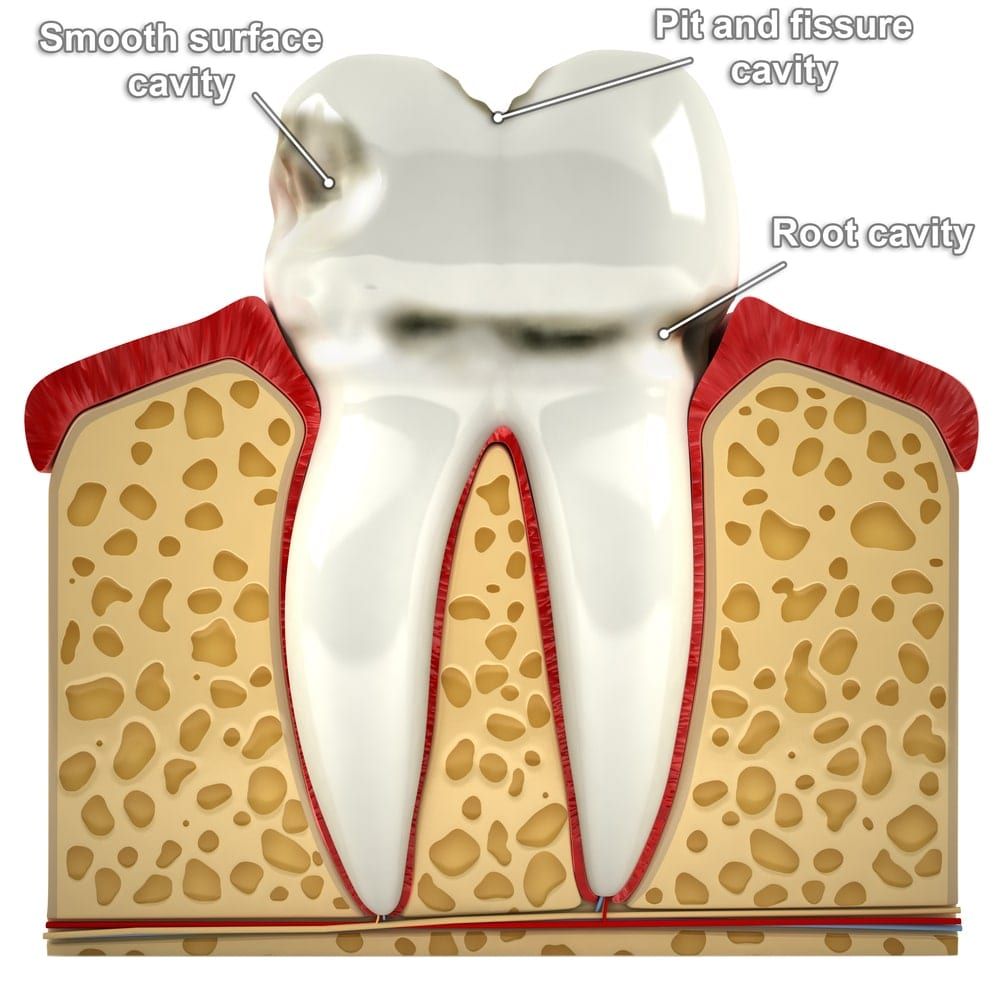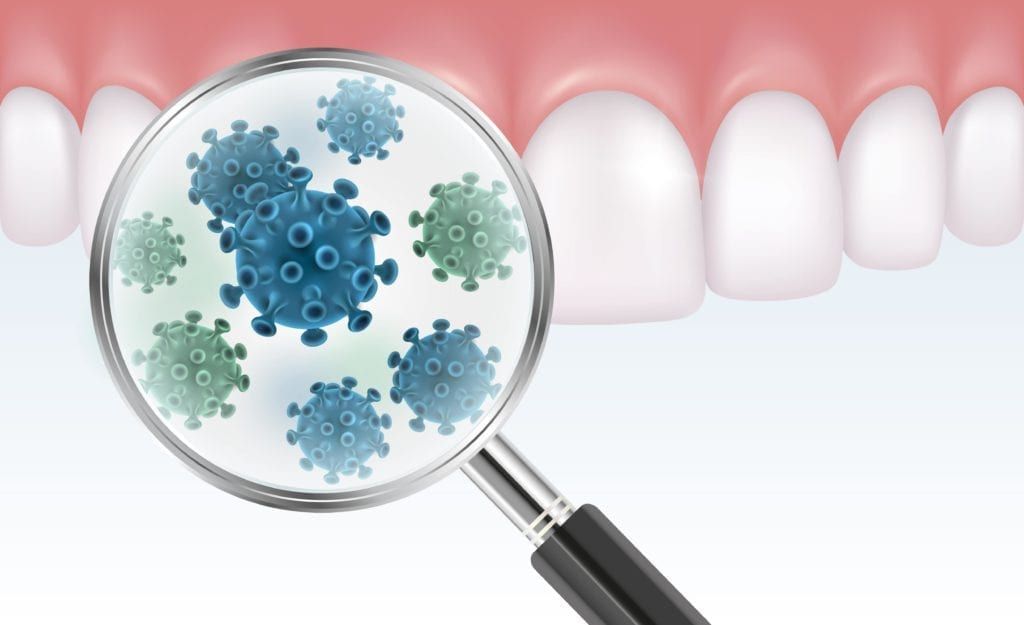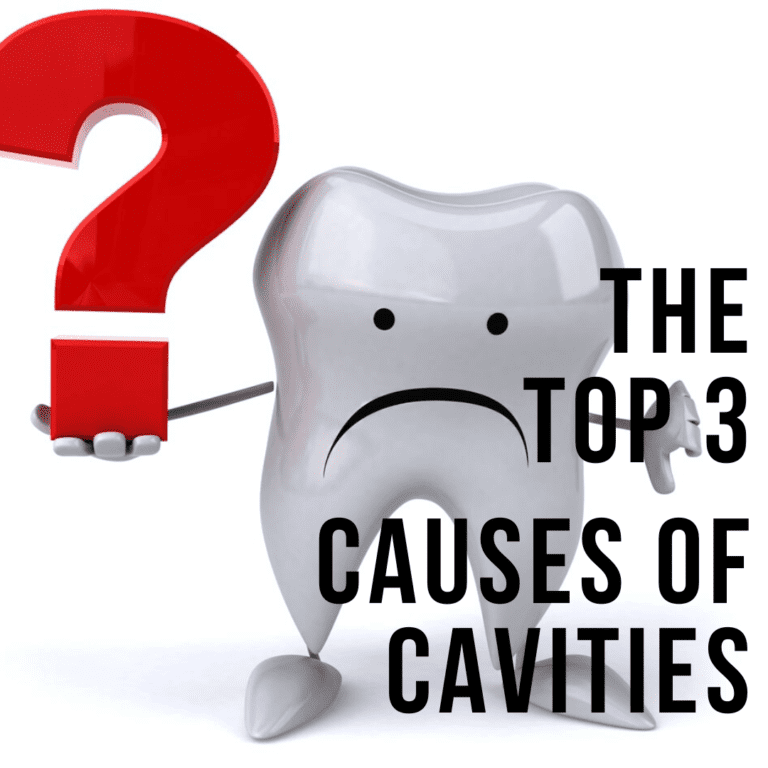
The importance of brushing and flossing our teeth has most likely been ingrained in our daily routine since childhood. Despite this, the National Institute of Dental and Craniofacial Research (NIDCR) notes that as many as 92% of American adults have experienced dental cavities in their permanent teeth. With this number being as high as it is, one must wonder if we truly understand how to prevent cavities.
The first question we must ask ourselves is, what is a cavity? Simply stated, a cavity is a decayed area of the tooth. Depending on its severity, it can either affect the outermost enamel layer or the underlying dentin layer. Additionally, there are three types of cavities that are differentiated based on their location. These include root cavities, pit and fissure cavities, and smooth surface cavities. Next, we must evaluate our understanding of how cavities form.
The fact of the matter is, many people don’t completely understand how cavities form. As a result, it becomes even harder to prevent them. To be fair, cavity formation cannot be attributed to a single factor. This is the other reason why it can be complicated to prevent cavities. There are multiple factors that can allow for the development of a dental cavity. Therefore, it is important to identify what these factors are and how their interactions affect your teeth. Here are the top three factors that are associated with causing cavities:
Plaque
The surface of your teeth contains a colorless film known as dental plaque. Unfortunately, this film houses bacteria and can trap food particles when you eat. If you can see visible plaque on your teeth, those are the food particles that are trapped within the film. Luckily, dental plaque can be removed with regular brushing and flossing. However, it can accumulate in hard to reach areas and can eventually harden into tartar. When plaque is undisturbed, it provides a safe environment for bacteria to live, eat, and reproduce.
Bacteria

The human mouth naturally contains streptococcus mutan bacteria and a healthy mouth is able to regulate this bacteria with saliva. Saliva is the mouth’s defense system against the acidic waste products that come from this bacteria. In fact, saliva helps to neutralize these acids so that they do not damage the tooth’s enamel. However, saliva can only neutralize so much acid and the body’s natural defense is not effective against excessive amounts of acidic waste products. Additionally, people with reduced saliva production have a decreased ability to prevent acid damage. Therefore when bacteria populations grow, they overwhelm the body’s natural defense mechanism and cause the enamel to erode.
Sugars
Streptococcus mutans are alive, however, and cannot grow in population without a food source. This is where sugar comes in. Sugar is the primary food source of decay causing bacteria and it is a component of candy, sweet foods, fruit, and carbohydrates to name a few things. When food particles become trapped in plaque, bacteria are then able to feed on the sugars. This causes two things: first, it allows them to produce acidic waste products and second, it allows them to reproduce and increase their population.
As you can see, plaque, bacteria, and sugars have an interdependent relationship that allows for the formation of cavities. Within this relationship, it is not one thing that leads to a cavity, rather it is multiple things that affect one another that must occur for a cavity to form. Therefore to prevent cavities, one must also do multiple things. Of course, brushing and flossing are important because they reduce the amount of plaque, which reduces bacterial populations. Additionally, however, reducing sugar intake is another key factor to starve bacteria and prevent their populations from growing.




